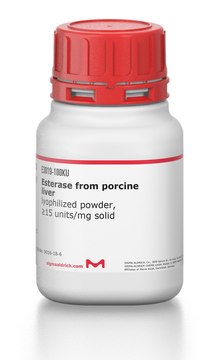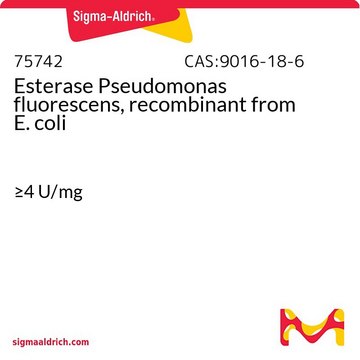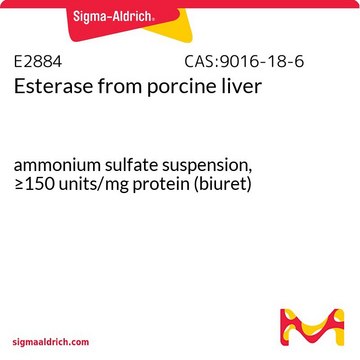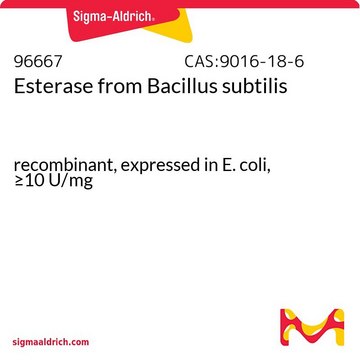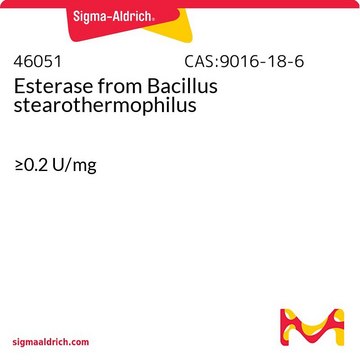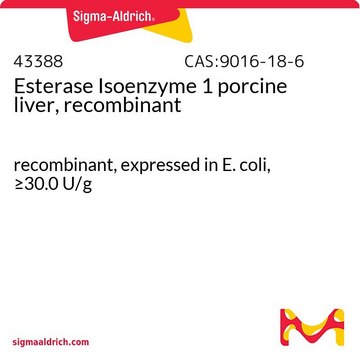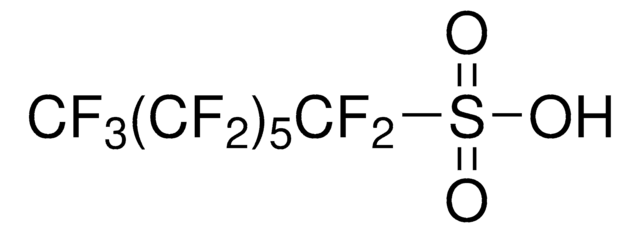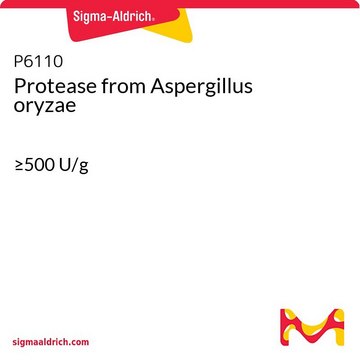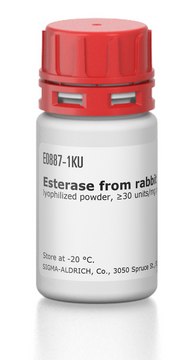79302
Esterase from Bacillus stearothermophilus
recombinant, expressed in E. coli, ≥4.0 U/mg
Sign Into View Organizational & Contract Pricing
All Photos(1)
About This Item
Recommended Products
recombinant
expressed in E. coli
Quality Level
form
crystalline
crystals
powder or flakes
specific activity
≥4.0 U/mg
storage temp.
−20°C
Looking for similar products? Visit Product Comparison Guide
Application
Esterase, from Bacillus stearothermophilus, may be used for the characterization of novel esterases . Product 79302 is recombinant and expressed in E. coli.
Biochem/physiol Actions
An esterase is a hydrolase that splits esters into acids and alcohols. The esterase catalyzes the transesterification of 1-phenylethanol.
The esterase catalyzes the transesterification of 1-phenylethanol.
Packaging
Bottomless glass bottle. Contents are inside inserted fused cone.
Unit Definition
1 U corresponds to the amount of enzyme which converts 1 μmol 4-nitrophenyl-L-acetate per minute at pH 7.5 and 30°C.
Signal Word
Danger
Hazard Statements
Precautionary Statements
Hazard Classifications
Resp. Sens. 1
Storage Class Code
11 - Combustible Solids
WGK
WGK 1
Flash Point(F)
Not applicable
Flash Point(C)
Not applicable
Regulatory Information
常规特殊物品
Choose from one of the most recent versions:
Certificates of Analysis (COA)
Lot/Batch Number
Don't see the Right Version?
If you require a particular version, you can look up a specific certificate by the Lot or Batch number.
Already Own This Product?
Find documentation for the products that you have recently purchased in the Document Library.
Characterization and heterologous gene expression of a novel esterase from Lactobacillus casei CL96.
Young J Choi et al.
Applied and environmental microbiology, 70(6), 3213-3221 (2004-06-09)
A novel esterase gene (estI) of Lactobacillus casei CL96 was localized on a 3.3-kb BamHI DNA fragment containing an open reading frame (ORF) of 1,800 bp. The ORF of estI was isolated by PCR and expressed in Escherichia coli, the
Jessica Lusty Beech et al.
RSC advances, 12(13), 8119-8130 (2022-04-16)
Esterase enzymes catalyze diverse hydrolysis reactions with important biological, commercial, and biotechnological applications. For the improvement of these biocatalysts, there is a need for widely accessible, inexpensive, and adaptable activity screening assays that identify enzymes with particular substrate specificities. Natural
B Sànchez-Nogué et al.
Environmental science and pollution research international, 20(5), 3480-3488 (2012-12-06)
The common sole, Solea solea (Linneus, 1758), and the Senegalese sole, Solea senegalensis (Kaup, 1858), are two important commercial species that coexist in the NW Mediterranean. In order to assess the species' ability to respond to chemical insults, a comparison
Marie C Fortin et al.
Drug metabolism and disposition: the biological fate of chemicals, 41(2), 326-331 (2012-12-12)
Studies on therapeutic drug disposition in humans have shown significant alterations as the result of pregnancy. However, it is not known whether pesticide metabolic capacity changes throughout pregnancy, which could affect exposure of the developing brain. We sought to determine
Zhe-Yi Hu et al.
Analytical and bioanalytical chemistry, 405(5), 1695-1704 (2012-12-15)
Dabigatran etexilate (DABE) is an oral prodrug that is rapidly converted by esterases to dabigatran (DAB), a direct inhibitor of thrombin. To elucidate the esterase-mediated metabolic pathway of DABE, a high-performance liquid chromatography/mass spectrometry based metabolite identification and semi-quantitative estimation
Our team of scientists has experience in all areas of research including Life Science, Material Science, Chemical Synthesis, Chromatography, Analytical and many others.
Contact Technical Service